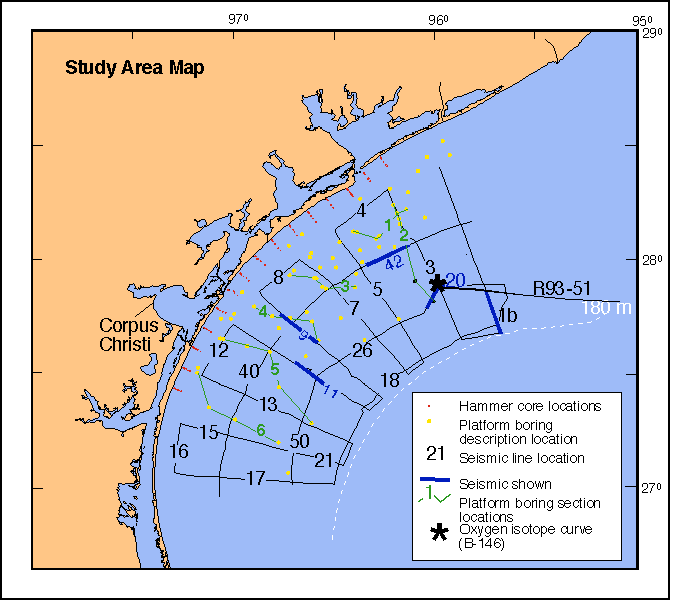The central Texas shelf is a low gradient (1.2 m/km) shelf, from the shoreface to the 100 m isobath and is wave-dominated. An inherent cyclicity in sedimentation on the shelf is due in part to the curvature of the coastline and the nature of longshore current transport. Presently, predominant wind direction is from the southeast, setting up onshore directed winds which strike the east and south Texas shelves at oblique angles. These asymmetric waves generate longshore currents which transport fine sands to the central Texas shelf.
Through the last glacial eustatic cycle (highstand Stage 5e to
present), three discrete highstand prograding shorelines were
deposited on the central Texas coast. The interplay between sediment
supply, longshore current transport of sands from the east and south
Texas shelves, as well as the rate of sea-level rise and fall appear
to be the controlling factors on shoreline configuration and
preservation potential. See Eckles et al. (2004) for greater detail.

